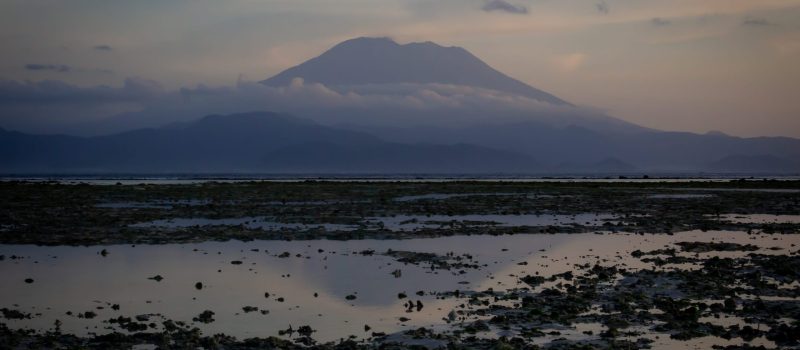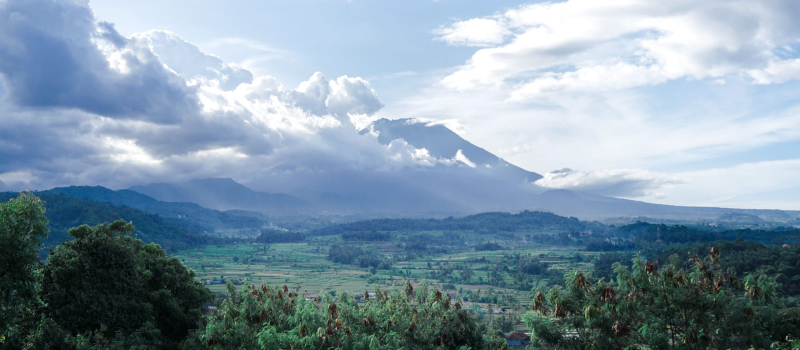Mount Agung – Bali’s Majestic Active Volcano
Rising gracefully 3,031 meters (9,944 feet) above the vibrant island of Bali, Indonesia, Mount Agung emerges as a genuinely majestic and iconic volcano, capturing the hearts of all who behold it. With a persistent presence, it stands as the pinnacle of natural beauty, holding the title of the highest peak on the island. Yet, its significance extends far beyond its physical stature, as it holds a profound cultural and spiritual importance for the Balinese. Bali tour package should have Mount Agung as the top preference for tourists who are interested in the historical realms.
Revered as a sacred site, Mount Agung in Bali serves as a hallowed bridge connecting the terrestrial realm with the celestial realm of the gods. Its magnificence beckons visitors from all corners of the globe, drawn to its awe-inspiring grandeur and the profound tapestry of ancient traditions and mythologies woven into its very being. However, amidst its ethereal allure, it is vital to acknowledge the dynamic and potent forces within.
To make the most of your trip you can read about the Travel tips for Bali which will give you clarity of what to expect from a trip. As an active volcano, Mount Agung in Bali serves as a powerful reminder of the raw and transformative energies that have shaped and continue to shape the captivating landscape of Bali. With every glimpse of its majestic shape, Mount Agung silently narrates the remarkable story of nature’s enduring power and the eternal bond between the Balinese people and their sacred land.
Best Time To Visit Mount Agung

Besakih, also known as Mount Agung, located in Bali, offers an enchanting experience during the Galungan celebrations, making it the ideal time to visit. The entire entrance and temple are transformed into a captivating display adorned with towering bamboo poles, delicate coconut leaves, and vibrant flowers.
As you approach, you’ll witness a breathtaking sight – a procession of graceful women, elegantly dressed in their finest white attire, skillfully balancing an array of stunning fruit and flower offerings upon their heads.
This mesmerising spectacle unfolds against the backdrop of the magnificent Mount Agung in Bali, standing tall and protective, casting its majestic presence over the temple. The vibrant decorations, poised procession, and awe-inspiring mountain create a moment forever in one’s memory.
This unique experience embodies the rich traditions and captivating beauty of Bali. For the people who love non-vegetarian food, Bali restaurants offer a great variety of cuisines to try and satisfy your hunger pangs. Always try the local food of the place you’re visiting for a better connection with the place.
Why visit Mount Agung in Bali?

Mount Agung in Bali is a popular tourist attraction for the following reasons:
- Majestic Natural Beauty: Mount Agung’s towering presence and its stunning landscapes make it a sight to behold. Its graceful slopes, lush vegetation, and panoramic views create a picturesque backdrop that attracts nature lovers, adventure enthusiasts, and photography enthusiasts alike.
- Spiritual and Cultural Significance: Mount Agung holds deep cultural and spiritual importance for the Balinese people. It is considered a sacred site and is central to Balinese Hinduism. Many visitors are drawn to the mountain to explore its cultural significance, witness religious ceremonies, and experience the profound sense of spirituality associated with the area. Temples in Bali are a great tourist attraction for all generations of people.
- Hiking and Trekking Opportunities: Mount Agung offers challenging and rewarding hiking and trekking experiences. Adventurous travelers can embark on a journey to reach its summit, enjoying the thrill of conquering the highest peak in Bali. The trek provides an opportunity to immerse oneself in the natural beauty of the surroundings and enjoy breathtaking views along the way.
- Unique Volcanic Experience: As an active volcano, Mount Agung offers a unique opportunity for visitors to witness the forces of nature in action. While safety precautions must be followed, the volcano’s activity adds an element of excitement and intrigue to the experience.
- Cultural Festivals and Celebrations: The vicinity of Mount Agung, particularly the Besakih Temple, is a hub of cultural festivals and celebrations. Events like Galungan showcase vibrant rituals, processions, and intricate decorations, providing visitors with an immersive cultural experience that is both visually captivating and spiritually enlightening.
Frequently Asked Questions About Mount Agung
1. Can I hike Mount Agung without a guide?
Hiking Mount Agung without a guide is not recommended. The volcano is known for its challenging terrain and unpredictable weather conditions. It is essential to have an experienced guide who is familiar with the area, knows the safest routes, and can provide necessary support and guidance. A guide can also assist in navigating any potential hazards and ensure your safety throughout the hike. Additionally, local regulations may require visitors to have a guide to access certain areas or to participate in cultural or religious activities associated with Mount Agung.
2. What is the best time to hike Mount Agung in Bali?
The best time to hike Mount Agung in Bali is during the dry season, generally from April to September. This period offers more favourable weather conditions with less rainfall and clearer skies, increasing the chances of a successful and enjoyable hike. However, it’s important to note that weather patterns can be unpredictable, so checking the forecast before planning a hike is essential. Additionally, avoiding hiking during the peak tourist season, particularly in July and August, is advisable, as the trails can become crowded. Choosing a weekday rather than a weekend may also help avoid large crowds.
3. How long does it take to hike Mount Agung?
The hike duration to Mount Agung depends on several factors, including the chosen route and individual hiking abilities. Mount Agung, located in Bali, Indonesia, is the highest volcano on the island. The most common route to the summit starts from the Besakih Temple and typically takes 5 to 7 hours to ascend, depending on one’s physical fitness and pace. The descent usually takes around 4 to 5 hours. It’s important to note that the hike is challenging, with steep inclines and rugged terrain. Hikers should be well-prepared, physically fit, and accompanied by experienced guides to ensure a safe and enjoyable journey.
4. What should I pack for a Mount Agung hike?
When preparing for a Mount Agung hike, it’s crucial to pack the right gear and essentials to ensure a safe and comfortable experience. Here’s a list of items to check. Sturdy hiking boots, Moisture-wicking clothing (layers for temperature changes), Rainproof jacket and pants, Hat, sunglasses, and sunscreen for sun protection, Headlamp or flashlight, Sufficient water supply and hydration system, High-energy snacks and meals, First aid kit with basic medical supplies, Trekking poles for stability and support. It’s essential to pack light, but ensure you have all the necessary items for a safe and enjoyable hike on Mount Agung.





